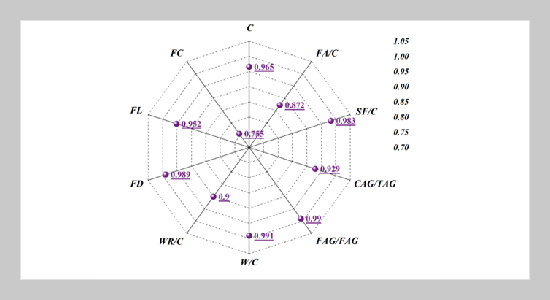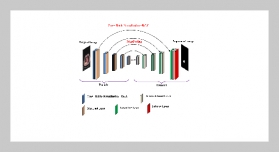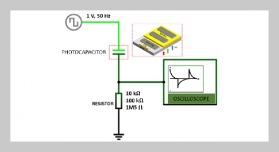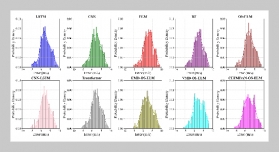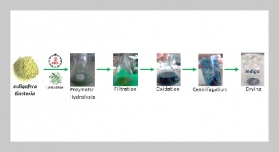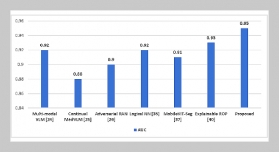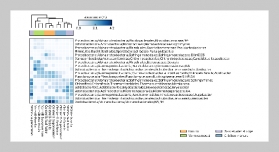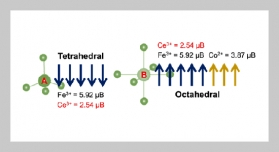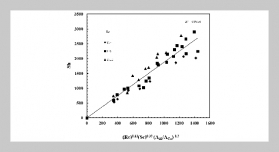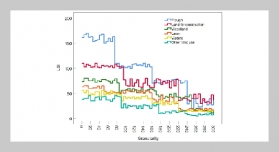- [1] B. Da, Y. Chen, H. Yu, H. Ma, D. Chen, Z. Wu, J. Liu, and Y. Li, (2022) “Preparation technology, mechanical properties and durability of coral aggregate seawater concrete in the island-reef environment" Journal of Cleaner Production 339: 130572. DOI: https: //doi.org/10.1016/j.jclepro.2022.130572.
- [2] Q. Fu, Z. Zhang, and D. Niu, (2023) “Understanding the acceleration impact of load and flowing water on the chloride ion transport properties of fly ash-based geopolymer concrete" Cement and Concrete Composites 141: 105146. DOI: https://doi.org/10.1016/j.cemconcomp. 2023.105146.
- [3] B.Zhang, F. Xu, H. Zhu, Z. Yang, and H. Peng, (2024) “Deterioration of bond performance between BFRP bars and coral aggregate concrete incorporating slag-based geopolymers under seawater corrosion environments" Construction and Building Materials 411: 134518. DOI: https: //doi.org/10.1016/j.conbuildmat.2023.134518.
- [4] E. C. Peters, (2015) “Diseases of coral reef organisms" Coral reefs intheAnthropocene:147–178. DOI: https: //doi.org/10.1007/978-94-017-7249-5_8.
- [5] S. A. Hoor and M. Esmaeili-Falak, (2024) “Innovative Approaches for Mitigating Soil Liquefaction: A State-of the-Art Review of Techniques and Bibliometric Analysis" Indian Geotechnical Journal: 1–28. DOI: https: //doi.org/10.1007/s40098-024-01120-3.
- [6] Z. Sun, Y. Li, L. Su, D. Niu, D. Luo, W. He, and S. Xie, (2024) “Investigation of electrical resistivity for fiber reinforced coral aggregate concrete" Construction and Building Materials 414: 135011. DOI: https: //doi.org/10.1016/j.conbuildmat.2024.135011.
- [7] R. S. Benemaran, M. Esmaeili-Falak, and M. S. Kord lar, (2024) “Improvement of recycled aggregate concrete using glass fiber and silica fume" Multiscale and Multidisciplinary Modeling, Experiments and Design 7: 1895–1914. DOI: https: //doi.org/10.1007/s41939-023-00313-2.
- [8] Y. Zhu, L. Huang, Z. Zhang, and B. Bayrami, (2022) “Estimation of splitting tensile strength of modified recycled aggregate concrete using hybrid algorithms" Steel and Composite Structures, An International Journal 44: 389–406.
- [9] L. Zhou, S. Guo, Z. Zhang, C. Shi, Z. Jin, and D. Zhu, (2021) “Mechanical behavior and durability of coral aggregate concrete and bonding performance with fiber reinforced polymer (FRP) bars: A critical review" Journal of Cleaner Production 289: 125652. DOI: https: //doi.org/10.1016/j.jclepro.2020.125652.
- [10] H.Yu, B. Da, H. Ma, X. Dou, and Z. Wu, (2020) “Ser vice life prediction of coral aggregate concrete structure under island reef environment" Construction and Build ing Materials 246: 118390. DOI: https://doi.org/10.1016/j.conbuildmat.2020.118390.
- [11] M.Esmaeili-Falak and R. S. Benemaran, (2024) “Ap plication of optimization-based regression analysis for evaluation of frost durability of recycled aggregate concrete" Structural Concrete 25: 716–737. DOI: https: //doi.org/10.1002/suco.202300566.
- [12] Z.Sun, D.Niu, X.Wang, L.Zhang, and D.Luo,(2022) “Bond behavior of coral aggregate concrete and corroded Cr alloy steel bar" Journal of Building Engineering 61: 105294. DOI: https: //doi.org/10.1016/j.jobe.2022.105294.
- [13] Z. Sun, L. Zhang, D. Niu, B. Wen, and D. Luo, (2020) “Time-varying model for predicting the resistivity of coral aggregate concrete" Construction and Building Materials 265: 120588. DOI: https://doi.org/10.1016/j.conbuildmat.2020.120588.
- [14] E. Hassankhani and M. Esmaeili-Falak, (2024) “Soil–structure interaction for buried conduits influenced by the coupled effect of the protective layer and trench in stallation" Journal of Pipeline Systems Engineering and Practice 15: 04024012. DOI: https://doi.org/10.1061/JPSEA2.PSENG-1547.
- [15] Z. Wenwu, Z. Shaowu, G. Guilin, L. Qiangqiang, and L. Kexing, (2024) “Estimating the Torsional Capacity of Reinforced Concrete Beams Using ANFIS Models" Advances in Engineering and Intelligence Systems 3: 136–150. DOI: 10.22034/aeis.2024.475280.1222.
- [16] L. Chen and W. Jiang, (2023) “Estimation of the Com pressive Strength of Self-Compacting Concrete (SCC) by a Machine Learning Technique Coupling with Novel Optimization Algorithms" Advances in Engineering and Intelligence Systems 2: 38–49. DOI: 10.22034/aeis.2023.383263.1069.
- [17] T. Zhou and D. Mozyrska, (2023) “Novel Optimization Algorithms Usage to Model the Compressive Strength of Ultra-High-Performance Concrete in Machine Learning Technique: Support Vector Regression" Advances in Engineering and Intelligence Systems 2: 51–63. DOI: 10.22034/aeis.2023.386402.1082.
- [18] Q. Fu, W. Xu, J. He, L.Su, H. Song, and D. Niu,(2021) “Dynamic strength criteria for basalt fibre-reinforced coral aggregate concrete" Composites Communications 28: 100983. DOI: https://doi.org/10.1016/j.coco.2021.100983.
- [19] J. Shi, X. Wang, Z. Wu, X. Wei, and X. Ma, (2022) “Long-term mechanical behaviors of uncracked concrete beams prestressed with external basalt fiber-reinforced polymer tendons" Engineering Structures 262: 114309. DOI: https: //doi.org/10.1016/j.engstruct.2022.114309.
- [20] D. Huang, D. Niu, L. Su, Y. Liu, B. Guo, Q. Xia, and G. Peng, (2022) “Diffusion behavior of chloride in coral aggregate concrete in marine salt-spray environment" Construction and Building Materials 316: 125878. DOI: https: //doi.org/10.1016/j.conbuildmat.2021.125878.
- [21] M. F. M. Zain, H. B. Mahmud, A. Ilham, and M. Faizal, (2002) “Prediction of splitting tensile strength of high-performance concrete" Cement and Concrete Research 32: 1251–1258. DOI: https: //doi.org/10.1016/S0008-8846(02)00768-8.
- [22] Y. Zhang, S. Zhang, T. Li, and M. Deng, (2023) “Cyclic response and shear mechanisms of RC short walls strengthened with engineered cementitious composites thin layers" Archives of Civil and Mechanical Engineering 23: 148. DOI: https: //doi.org/10.1007/s43452-023-00683-x.
- [23] Y. Zhang, S. Zhang, and M. Deng, (2022) “Four-point bending tests of ECC: Mechanical response and toughness evaluation" Case Studies in Construction Materials 17: e01573. DOI: https: //doi.org/10.1016/j.cscm.2022.e01573.
- [24] Y. Wang, S. Zhang, D. Niu, L. Su, and D. Luo, (2020) “Strength and chloride ion distribution brought by aggregate of basalt fiber reinforced coral aggregate concrete" Construction and Building Materials 234: 117390. DOI: https://doi.org/10.1016/j.conbuildmat.2019.117390.
- [25] Z. Deng, Y. Zhou, J. Jiang, X. Huang, and B. Liu, (2023) “Mechanical properties and uniaxial constitutive model of fiber-reinforced coral aggregate concrete" Structural Concrete 24: 4259–4275. DOI: https: //doi.org/10.1002/suco.202200271.
- [26] B. Liu, X. Zhang, J. Ye, X. Liu, and Z. Deng, (2022) “Mechanical properties of hybrid fiber reinforced coral concrete" Case Studies in Construction Materials 16: e00865. DOI: https: //doi.org/10.1016/j.cscm.2021.e00865.
- [27] D. Niu, L. Su, Y. Luo, D. Huang, and D. Luo, (2020) “Experimental study on mechanical properties and durability of basalt fiber reinforced coral aggregate concrete" Construction and Building Materials 237: 117628. DOI: https: //doi.org/10.1016/j.conbuildmat.2019.117628.
- [28] D. Li, X. Zhang, Q. Kang, and E. Tavakkol, (2023) “Estimation of unconfined compressive strength of marine clay modified with recycled tiles using hybridized extreme gradient boosting method" Construction and Building Materials 393: 131992. DOI: https://doi.org/10.1016/j.conbuildmat.2023.131992.
- [29] R. Liang and B. Bayrami, (2023) “Estimation of frost durability of recycled aggregate concrete by hybridized Random Forests algorithms" Steel and Composite Structures 49: 91–107. DOI: https: //doi.org/10.12989/scs.2023.49.1.091.
- [30] Y. Dawei, Z. Bing, G. Bingbing, G. Xibo, and B. Razza ghzadeh, (2023) “Predicting the CPT-based pile set-up parameters using HHO-RF and PSO-RF hybrid models" Structural Engineering and Mechanics, An Int’l Journal 86: 673–686. DOI: 10.12989/sem.2023.86.5.673.
- [31] M. Esmaeili-Falak, H. Katebi, M. Vadiati, and J. Adamowski, (2019) “Predicting triaxial compressive strength and Young’s modulus of frozen sand using artificial intelligence methods" Journal of Cold Regions Engineering 33: 04019007. DOI: https: //doi.org/10.1061/(ASCE)CR.1943-5495.0000188.
- [32] M.Esmaeili-Falak and R. S. Benemaran, (2024) “Ensemble extreme gradient boosting based models to predict the bearing capacity of micropile group" Applied Ocean Research 151: 104149. DOI: https: //doi.org/10.1016/j.apor.2024.104149.
- [33] R. S. Benemaran, (2023) “Application of extreme gradient boosting method for evaluating the properties of episodic failure of borehole breakout" Geoenergy Science and Engineering 226: 211837. DOI: https://doi.org/10.1016/j.geoen.2023.211837.
- [34] K. Zhang, Y. Zhang, and B. Razzaghzadeh, (2024) “Application of the optimal fuzzy-based system on bearing capacity of concrete pile" Steel and Composite Structures 51: 25. DOI: https: //doi.org/10.12989/scs.2024.51.1.025.
- [35] B. M. Yaychi and M. Esmaeili-Falak, (2024) “Estimat ing axial bearing capacity of driven piles using tuned random forest frameworks" Geotechnical and Geological Engineering 42: 7813–7834. DOI: https: //doi.org/10.1007/s10706-024-02952-9.
- [36] M. Wang, (2022) “Mechanical Properties Dataset of BFRC for strength prediction with machine learning" Mendeley Data 1: DOI: 10.17632/b5s8ywwgwr.1.
- [37] G. J. McRae, J. W. Tilden, and J. H. Seinfeld, (1982) “Global sensitivity analysis—a computational implementation of the Fourier amplitude sensitivity test (FAST)" Computers & Chemical Engineering 6: 15–25. DOI: https: //doi.org/10.1016/0098-1354(82)80003-3.
- [38] N.-D. Hoang, (2023) “Compressive strength estimation of rice husk ash-blended concrete using deep neural network regression with an asymmetric loss function" Iranian Journal of Science and Technology, Transactions of Civil Engineering 47: 1547–1565. DOI: https: //doi.org/10.1007/s40996-022-01015-4.
- [39] J. Herman and W. Usher, (2017) “SALib: An open source Python library for sensitivity analysis" Journal of OpenSource Software 2: 97. DOI: 10.21105/joss. 00097.
- [40] S. Xu, X. An, X. Qiao, L. Zhu, and L. Li, (2013) “Multi output least-squares support vector regression machines" Pattern recognition letters 34: 1078–1084. DOI: https: //doi.org/10.1016/j.patrec.2013.01.015.
- [41] J. C. Y. Ngu and C. Yeo, (2022) “A comparative study of different kernel functions applied to LW-KPLS model for nonlinear processes" Biointerface Research in Ap plied Chemistry 13: DOI: 10.33263/BRIAC132.184.
- [42] L. Breiman, (2001) “Random forests" Machine learning 45: 5–32. DOI: https: //doi.org/10.1023/A:1010933404324.
- [43] R. Díaz-Uriarte and S. A. de Andrés, (2006) “Gene selection and classification of microarray data using random forest" BMC bioinformatics 7: 1–13. DOI: https: //doi.org/10.1186/1471-2105-7-3.
- [44] D. R. Cutler, T. C. E. Jr, K. H. Beard, A. Cutler, K. T. Hess, J. Gibson, and J. J. Lawler, (2007) “Random forests for classification in ecology" Ecology 88: 2783 2792. DOI: https: //doi.org/10.1890/07-0539.1.
- [45] V. F. Rodriguez-Galiano, B. Ghimire, J. Rogan, M. Chica-Olmo, and J. P. Rigol-Sanchez, (2012) “An assessment of the effectiveness of a random forest classifier for land-cover classification" ISPRS journal of photogrammetry and remote sensing 67: 93–104. DOI: https: //doi.org/10.1016/j.isprsjprs.2011.11.002.
- [46] H. Sun, D. Gui, B. Yan, Y. Liu, W. Liao, Y. Zhu, C. Lu, and N. Zhao, (2016) “Assessing the potential of random forest method for estimating solar radiation using air pollution index" Energy Conversion and Management 119: 121–129. DOI: https: //doi.org/10.1016/j.enconman.2016.04.051.
- [47] Z. Wang, Y. Wang, R. Zeng, R. S. Srinivasan, and S. Ahrentzen, (2018) “Random Forest based hourly building energy prediction" Energy and Buildings 171: 11 25. DOI: https: //doi.org/10.1016/j.enbuild.2018.04.008.
- [48] D. Połap and M. Wo´ zniak,(2021)“Redfoxoptimization algorithm" Expert Systems with Applications 166: 114107. DOI: https: //doi.org/10.1016/j.eswa.2020.114107.
- [49] W. Kulasooriya, R. S. S. Ranasinghe, U. S. Perera, P. Thisovithan, I. U. Ekanayake, and D. P. P. Meddage, (2023) “Modeling strength characteristics of basalt fiber reinforced concrete using multiple explainable machine learning with a graphical user interface" Scientific Reports 13: 13138. DOI: https: //doi.org/10.1038/s41598-023-40513-x.
